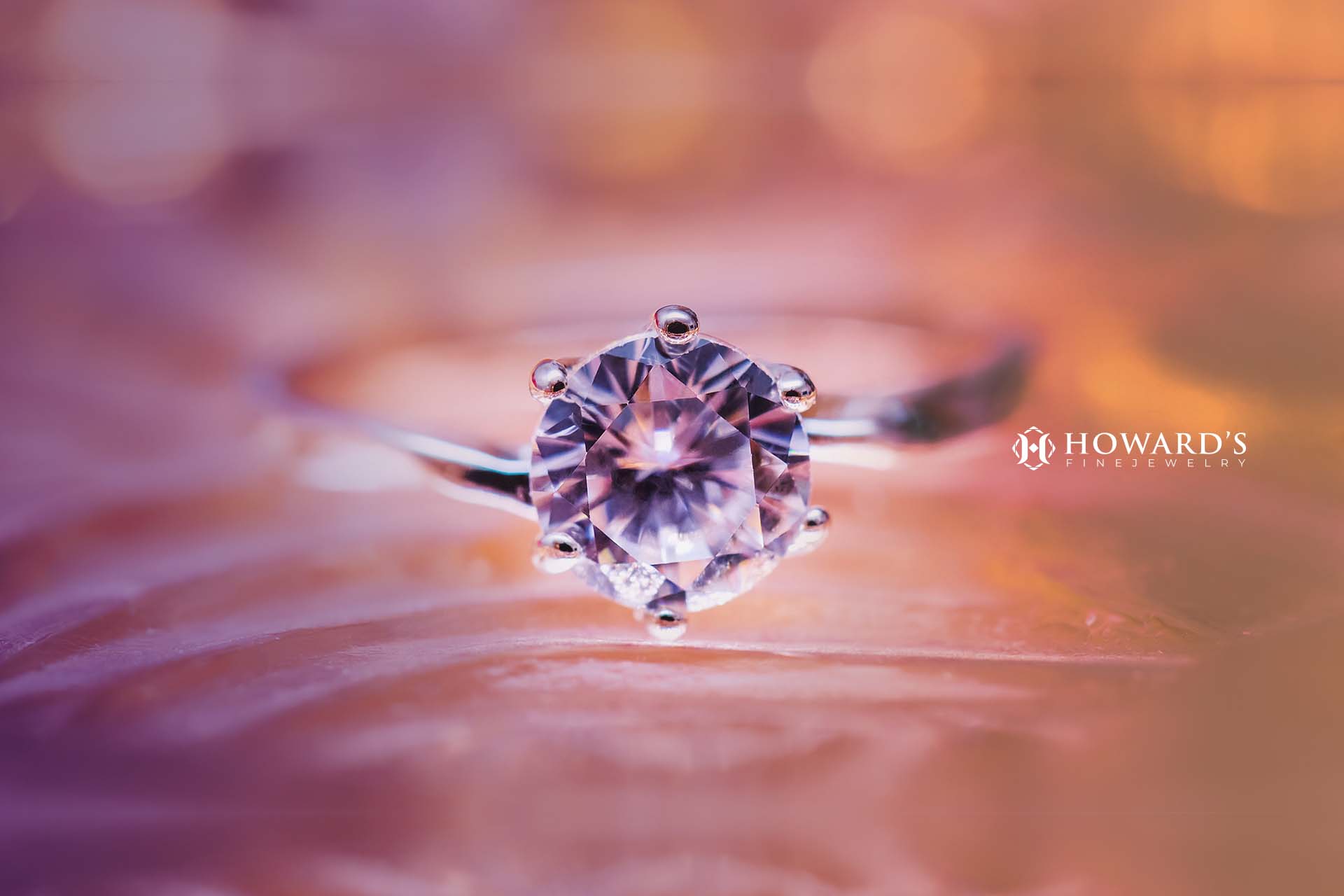Diamonds come in a wide variety of colors, from blues to pinks and yellows. In a white diamond, though, the presence of certain color tints will lower its value. You want less color in a white diamond so it can reflect more true color, which makes it more valuable.
The diamond industry uses the GIA color scale, which is a scale from D (colorless) through Z (light color). All of the diamonds that fall within this scale are considered white diamonds, even if they do have a little bit of color in them. True colored diamonds have their own color scale used to grade them.
The differences between some of these grades can be extremely difficult for the untrained eye to spot, and usually only a gemologist is able to make an accurate grade by performing side-by-side comparisons. D, E and F diamonds, for example, all appear extremely similar to each other if you are not sure exactly what to look for, and especially if you do not have them next to each other for comparison. Those diamonds should only be set in white gold or platinum, because they are so clear—otherwise, yellow gold would reflect its color and eliminate the colorless effect you get out of the perfectly white diamond.
What to look for when buying diamonds
So, if you’re out at a jewelry store, what should you be looking for in terms of diamond clarity in Sterling Heights, MI?
Typically, you’ll find the best value in the G to J range. If you’re getting a larger diamond (over one carat) you should opt for the G to H range, as color is easier to detect in these diamonds, but I to J is perfectly fine for diamonds under one carat.
What gives these diamonds the best value? Since it’s nearly impossible for the naked eye to discern the difference at the top of the color scale for white diamonds, you’re not losing much of anything with regard to aesthetic value in purchasing a diamond a little farther down the scale, but you’re also saving yourself quite a bit of money in the process. If you really want to make a visual difference you should invest in a higher cut rather than a higher color, as the cut is going to play more of a role in the diamond’s brilliance.
Diamonds that have more facets reflect more light, which means they’re going to hide color better than other shapes. Therefore, round, princess and other modified brilliant cuts are going to give you a little more leeway in terms of color.
Finally, if you are concerned about carat weight and have a smaller budget to work with, consider getting a yellow gold setting and a round diamond that falls in the K to L color range. A lower color with a higher cut grade will have more visual appeal than a diamond in a higher color range but lower cut grade.
For more information about buying diamonds and what to look for with regard to color and diamond clarity in Sterling Heights, MI, contact Howard’s Fine Jewelry or pay a visit to our store today!

